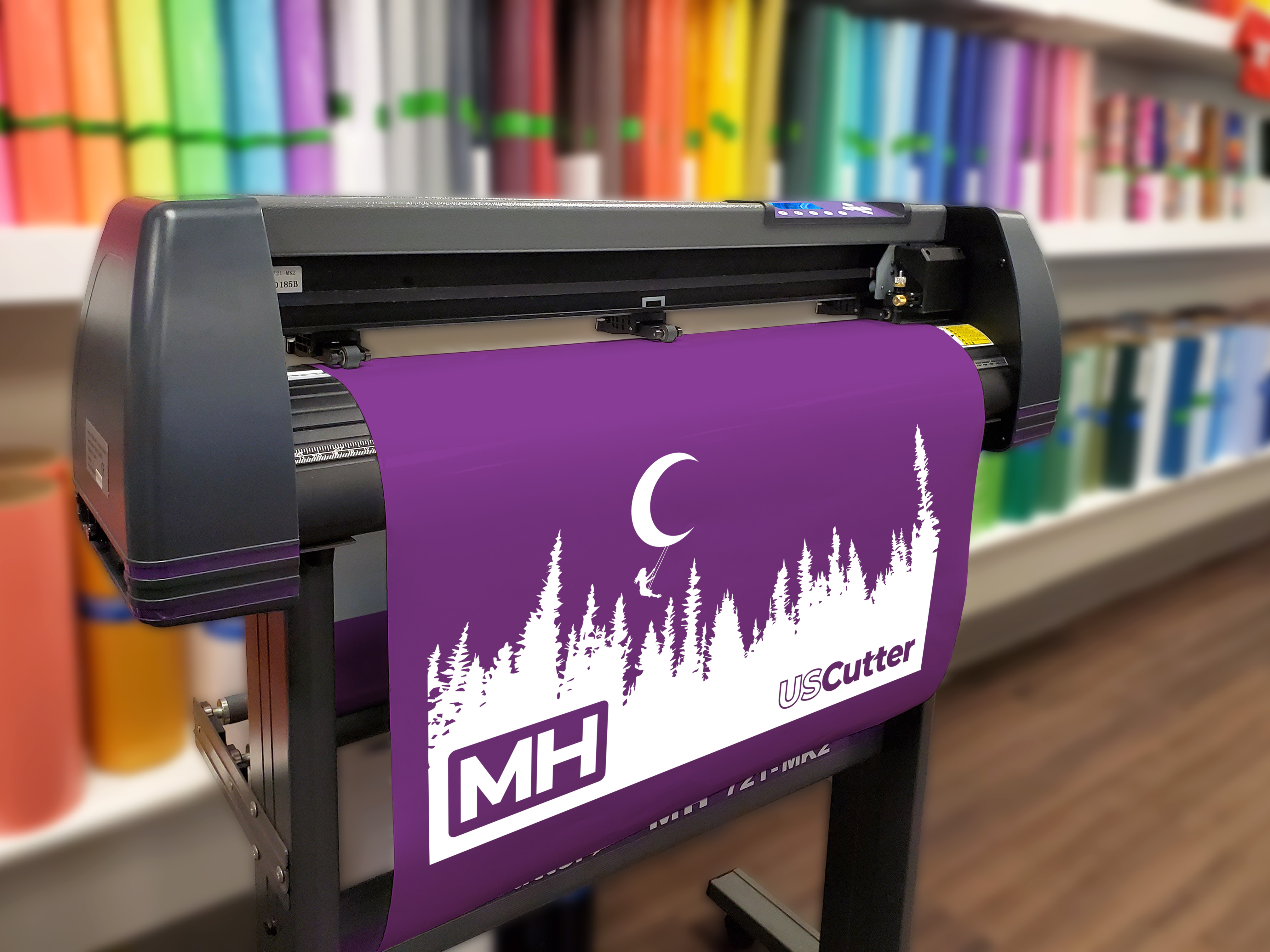The Benefits of Using Heat Transfer Vinyl in Fashion Design
May 1st 2023
When it comes to fashion design, creativity, and innovation are at the core of every successful piece. One technique that has been gaining popularity in recent years is using heat transfer vinyl (HTV) to create unique and stylish designs. In this blog post, we'll discuss the benefits of using heat transfer vinyl in fashion design and offer tips for incorporating it into your work using USCutter's equipment and supplies.

What is Heat Transfer Vinyl?
Heat transfer vinyl is a thin, flexible material with a heat-activated adhesive on one side. When heat is applied, the adhesive bonds to the fabric, leaving a vibrant, long-lasting design behind. HTV can be used on various materials, including cotton, polyester, and blends, making it a versatile option for fashion designers and custom apparel makers.
Why Use Heat Transfer Vinyl for Your Company's Clothing?
HTV Offers Unlimited Design Possibilities in Fashion
One of the biggest benefits of using HTV in fashion design is its unlimited design possibilities. You can easily create intricate patterns, bold graphics, and even photo-realistic images. From simple lettering to complex logos, HTV allows you to unleash your creativity and stand out in the competitive world of fashion design.
It Offers Durability and Quality
Heat transfer vinyl is known for its durability and long-lasting quality. The adhesive bonds strongly to fabric, ensuring your designs won't peel or fade after multiple washes. This is particularly important for custom apparel makers who need to guarantee their products will maintain their appearance over time.
Cost-Effective and Timesaving
HTV is a cost-effective alternative to traditional screen printing, especially for small-scale projects or one-off designs. With screen printing, you often need to order in bulk to make it cost-effective, which can be a drawback for emerging designers. Moreover, using HTV eliminates the need for multiple screens and lengthy drying times, saving you both time and money in the production process.
How Can You Incorporate Heat Transfer Vinyl into Your Designs?
Choose the Right HTV for Your Project
When it comes to heat transfer vinyl, there are various types available, each with its unique properties and benefits. USCutter offers many HTV options, including Siser EasyWeed, Siser Glitter, and Siser Holographic. Be sure to choose the right HTV for your specific project, considering factors like the fabric type, desired finish, and design complexity.
Invest in a Quality Vinyl Cutter
A vinyl
cutter is an essential piece of equipment for working with heat transfer
vinyl. It allows you to cut your designs with precision, ensuring a
professional finish. USCutter offers a variety of vinyl cutters to suit every
budget and need, such as the MH
Series, SC2 Series, and the Graphtec CE7000 series.
Use a Heat Press for Consistent Results
While applying HTV using a household iron is possible, investing in a heat press will ensure consistent results and make the application process much easier. In addition, a heat press provides even heat distribution and pressure, ensuring your designs bond securely to the fabric. USCutter offers several heat press options, including the popular Hotronix Fusion IQ and the affordable 15" x 15" Clamshell Heat Press.
Master the Layering Technique
One of the most effective ways to create unique and eye-catching designs with HTV is through layering. This involves applying multiple layers of HTV in different colors or finishes to achieve a multi-dimensional effect. To master the layering technique, be sure to follow these steps:
Always start with the largest or most solid design elements and work up to the smaller or more detailed pieces.
Use a heat transfer tape or a heat-resistant film to align and secure your layers before pressing.
Apply each layer for a few seconds to tack it down before removing the carrier sheet, and then press the final design for the full recommended time and temperature.
Experiment with Mixed Media
Another way to incorporate HTV into your fashion designs is by combining it with other materials and techniques. For example, you could use HTV alongside embroidery, fabric paint, or appliqué to create a truly unique piece. The key is to be creative and not be afraid to push the boundaries of what is possible with heat transfer vinyl.
Heat Transfer Vinyl Tips and Tricks
To make the most of your heat transfer vinyl projects, consider these tips and tricks:
Test Your Materials Before Starting
Before starting your project, perform a test cut and press on a small piece of your chosen fabric. This will help you determine the ideal pressure, temperature, and time settings for your heat press, as well as the compatibility of the HTV with your fabric.
Use a Weeding Tool for Precision
A weeding tool is essential for removing excess vinyl from your cut pieces when working with intricate designs. USCutter offers a variety of weeding tools, such as the Siser Weeder and the EZ Weeder, to help you achieve precise results.
Properly Store Your HTV
To ensure your heat transfer vinyl remains in top condition, store it in a cool, dry place away from direct sunlight. It's also a good idea to keep your HTV in its original packaging or a protective sleeve to prevent dust, dirt, and moisture from affecting its performance.
Stay Informed About New Products and Techniques
The world of HTV is constantly evolving, with new products and techniques being developed regularly. Stay informed about the latest trends and innovations by following industry blogs, attending workshops, or joining online forums dedicated to heat transfer vinyl.
<h1>Conclusion</h1>
Incorporating heat transfer vinyl into your fashion designs offers numerous benefits, including unlimited design possibilities, durability, cost-effectiveness, and environmental friendliness. With the right equipment and supplies from USCutter, you'll be well on your way to creating unique, eye-catching pieces that will set you apart from the competition. Don't be afraid to experiment with different HTV types, layering techniques, and mixed media applications to unleash your full creative potential.

